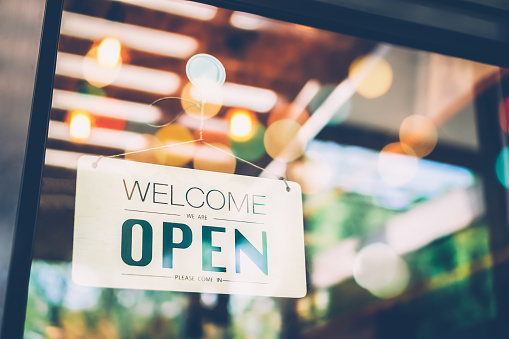Ecommerce sales globally are set to cross USD 5,542 billion in 2022. It is further expected to topple USD 7,400 billion by the end of 2025.

It doesn’t require us to say out loud that ecommerce market is expanding and will continue to do so at a rapid pace in the coming years. But that doesn’t deplete the importance of brick-and-mortar stores by any means.
The term ‘retail apocalypse’ was coined to define the growth of ecommerce by several experts who strongly opined that it would wipe offline presence from the face of the earth.
However, while online business development has significantly impacted offline retail stores, it has not been as profound or negative as these pundits would like us to believe.
While there were several brands that started as online-only, they have realized that online and offline presence need to co-exist if they are to gain maximum traction.
Add to that, even though the fraction of ecommerce sales in total sales is rising, it is nowhere close to offline sales, which means that it is improbable that it can cause a massive dent in your business unless you let it.
This article discusses how ecommerce presence can contribute to augmenting your brick-and-mortar retail business strategy.
Why do brick-and-mortar stores still make the cut?
92% of US retail sales still take place offline. While the numbers are expected to dwindle fast, with one in every three internet users expected to shop online by 2029, there is still a lot of market for offline stores. Here’s why –
A lot of people still prefer feeling the products or seeing them in person
It happens. When we are ordering something new or pricey items, we tend to have a look at them to ascertain the quality before signing on the cheque or doling out the dollar bills.
People need products immediately, and they cannot wait
29.9% of respondents of a Ripen survey state that when customers are looking for a product, they want it fast. For them, running to the store next to their house and being able to purchase it cuts the slack, and they cannot even wait for online retailers who guarantee same-day delivery.
Privacy is a significant propeller
When you buy something offline, you do not receive a plethora of useless marketing emails after that to remind you of things you do not care about, nor do you have marketing agents ringing you up out of the blue.
It is a significant contributor for those who still resort to physical stores for making their purchases.
It saves shipping costs
Unless you buy products worth a certain amount, ecommerce vendors will charge you a shipping fee. It often deters buyers from buying inexpensive products that they frequently may require.
Given that shipping costs come with huge markups, buyers are happy buying from offline stores where they do not have to pay for shipping.
What is ruining the case for brick and mortar business models?

While there is a lot going in favour of brick-and-mortar, there are certain aspects that have them scratching their heads. Here are the potential disadvantages of having an offline store –
High rental costs
Irrespective of where you set up your store, you will have to bear the exorbitant rental cost. In addition, most of these contracts are binding for a specific timespan, which worsens their case.
High overhead costs
Electricity, water, business insurance, property taxes, and inventory costs – are some of the overhead expenses that brick-and-mortar stores have to bear regularly. These expenses form a decent chunk of the overall costs and, therefore, can deter people away from maintaining them.
Advantages of ecommerce over brick and mortar
Over 4 billion people have internet connectivity, and 85% of them spend 7 hours every day online. In addition, there are over 2 billion online buyers, and the number is expected to proliferate.
Ecommerce is growing, and it is doing so because it offers several compelling advantages over regular brick-and-mortar spaces, such as
- It lets you connect to your customers via multiple mediums, such as social media and paid advertising
- With automation creeping in, ecommerce helps in lowering your expenses.
- Digital marketing enables you to have more leeway to expand your horizon and find a new buyer with relative ease.
- It eliminates the need to bear high capital expenses otherwise spent on managing offline stores.
- It gives you more chances to strike meaningful horizontal and vertical relationships.
- Ecommerce stores are secured with high-level security, such as Level-1 PCI compliance, which makes them relatively more secure from break-ins.
- It can remain open 24/7, which is unlikely with offline stores.
Benefits of combining brick and mortar with ecommerce
If you are to provide a superior customer experience, the key would be to focus on both – online and offline.
With both offering specific advantages, you can seamlessly collaborate them to bring about a holistic strategy that would be able to provide you with the desired results with ease.

Here is why you should consider combining brick and mortar with an ecommerce presence for optimum results –
Increased customer satisfaction
Shoppers, today, are looking for options, be it with regards to the offerings you have or with the sources through which they can interact with them.
So, it is imperative that you will have to offer them ample options by devising an omnichannel brand identity where you have the same product available across online and offline channels.
In addition, having multiple sales channels also allows customers to choose how they want to complete the payments, shipping, and pick-up, enabling them to feel that they have the power.
It helps improve customer satisfaction and build loyalty in the long term and can prove invaluable for your growth.
Omnichannel market presence becomes a reality
73% of customers prefer an omnichannel selling approach.
When you are marketing, it is imperative for you to have your focus spread across channels for maximum traction. When you are only present offline, you will barely have any interaction with online buyers, and they may never have heard of you. But, if you have an ecommerce store too, it becomes easier for you to be omnipresent and allows customers the luxury of choice, and they can choose any channel to get in touch or place an order.
Speeds up the buying process
When you combine your physical and digital retail experiences, you get more chances to accelerate the decision making of your customer. When it comes to buying, initial consideration and active consideration, or the first two stages of buying, are considered the most difficult.
When you have a single voice across channels, it makes it easier for customers to research online and make their purchases online or offline with ease. It would allow them to explore more about the product and feel it before making their final call.
Embark on a superior customer experience
When you only have an offline presence, a customer will have to come back to your store if they have any complaints regarding the product sold to them.
When you follow an omnichannel strategy, they can dial up on your online presence and get a solution within minutes without having to revisit the store, in most cases.
With the power shifting to the customer, today, they expect us to find them rather than going the other way round.
So, for example, you can inform a potential lead of deals and promotions by reaching out to them via social media. These go a long way in improving your overall customer experience.
Expand your scope
A customer in Africa may never get to know about a niche product you are selling in Europe. Similarly, not everyone is online or will walk into your sales funnel. So, combining both of these will help you get rid of these bottlenecks and cater to customers across channels.
Easy access meets attention-grabbing.
SEO and paid advertising make it easier than ever to reach more customers. Click on the ad, and you can order from a brand that you haven’t heard of merely five minutes ago. That is the strength of online presence.
With an offline store, you establish a more personal relationship with the prospect and carefully lead them through your sales funnel.
Combining these two means capturing both audiences without spending double the effort!
Bricks and clicks business model
Now that businesses have gradually understood the need to have an omnichannel presence, they have started following the relatively newer bricks and clicks business model.
It means that they are no longer resorting to a single marketing channel and now have physical retail locations (or bricks) combined with ecommerce sales channels (or the clicks).
It allows them to build a unified retail strategy that combines the best of both worlds and is focused on offering more options to customers while improving revenue and reach.
Wrap up
We are in a constantly evolving world, where things are changing rapidly, especially when it comes to marketing. But for businesses to make the most from these changes, it is vital for them to have a comprehensive omnichannel presence.
Modern vendors are fast embarking on providing a complete buffet of offerings that would allow customers to explore their offerings with ease while also getting the hang of how they operate.
The results have been phenomenal up until now, and there are no reasons for us to believe that it won’t get any better as we move forward.

